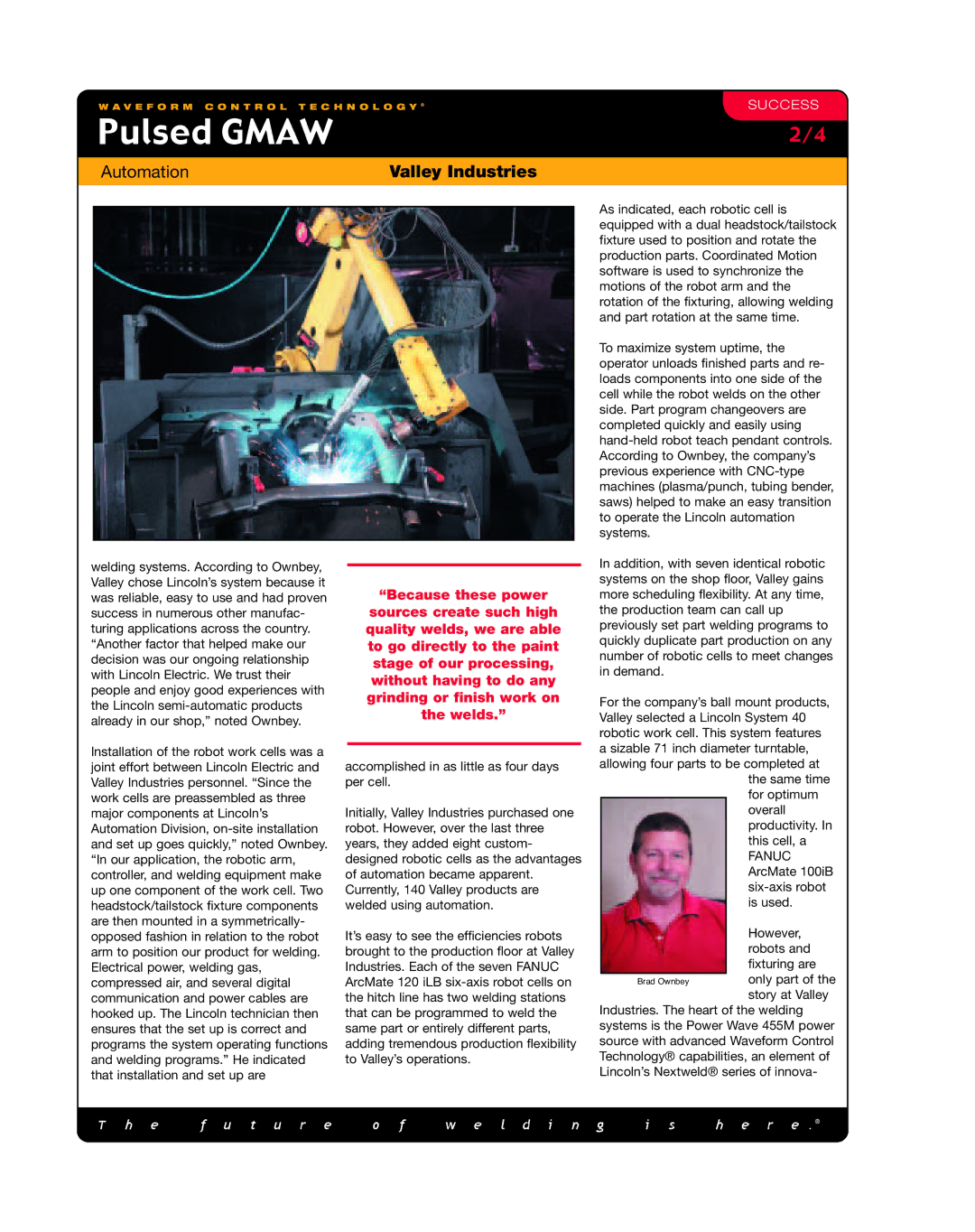
W A V E F O R M C O N T R O L T E C H N O L O G Y ®
SUCCESS
Pulsed GMAW | 2/4 |
Automation | Valley Industries |
|
|
welding systems. According to Ownbey, Valley chose Lincoln’s system because it was reliable, easy to use and had proven success in numerous other manufac- turing applications across the country. “Another factor that helped make our decision was our ongoing relationship with Lincoln Electric. We trust their people and enjoy good experiences with the Lincoln
Installation of the robot work cells was a joint effort between Lincoln Electric and Valley Industries personnel. “Since the work cells are preassembled as three major components at Lincoln’s Automation Division,
“Because these power
sources create such high quality welds, we are able to go directly to the paint stage of our processing, without having to do any grinding or finish work on
the welds.”
accomplished in as little as four days per cell.
Initially, Valley Industries purchased one robot. However, over the last three years, they added eight custom- designed robotic cells as the advantages of automation became apparent. Currently, 140 Valley products are welded using automation.
It’s easy to see the efficiencies robots brought to the production floor at Valley Industries. Each of the seven FANUC ArcMate 120 iLB
As indicated, each robotic cell is equipped with a dual headstock/tailstock fixture used to position and rotate the production parts. Coordinated Motion software is used to synchronize the motions of the robot arm and the rotation of the fixturing, allowing welding and part rotation at the same time.
To maximize system uptime, the operator unloads finished parts and re- loads components into one side of the cell while the robot welds on the other side. Part program changeovers are completed quickly and easily using
In addition, with seven identical robotic systems on the shop floor, Valley gains more scheduling flexibility. At any time, the production team can call up previously set part welding programs to quickly duplicate part production on any number of robotic cells to meet changes in demand.
For the company’s ball mount products, Valley selected a Lincoln System 40 robotic work cell. This system features a sizable 71 inch diameter turntable, allowing four parts to be completed at
the same time for optimum overall productivity. In this cell, a
FANUC ArcMate 100iB
However, robots and fixturing are only part of the story at Valley
Industries. The heart of the welding systems is the Power Wave 455M power source with advanced Waveform Control Technology® capabilities, an element of Lincoln’s Nextweld® series of innova-
